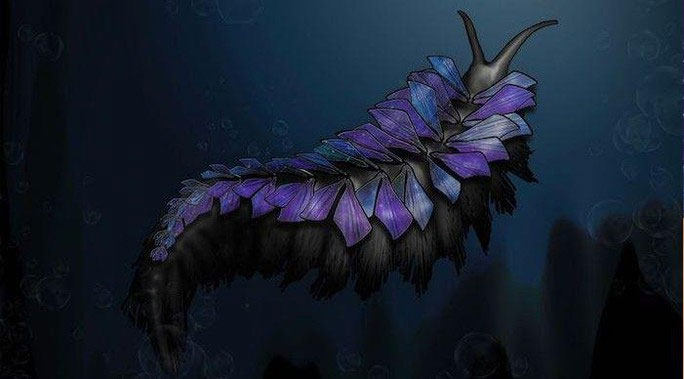The reconstructed image reveals a stunning yet terrifying creature swimming through the ancient seas, prompting scientists to borrow the name of the extraterrestrial being from the Oscar-winning film “Dune” to describe it.
According to Live Science, this remarkable fossil was unearthed in northern Utah, USA, and it is an ancient sea worm.
However, unlike the “appearance” of modern sea worms, the reconstructed image shows a body adorned with numerous sharp, colorful appendages resembling dozens of blades scattered across its form.

Shaihuludia shurikeni described as an extraterrestrial creature from the American science fiction film – (Graphic: Rhiannon LaVine)
It has been named Shaihuludia shurikeni, inspired by the fictional sandworms known as “Shai-Hulud” on the desert planet Arrakis in the American film “Dune” (released in Vietnam as Dune: The Desert Planet), which won 6 Oscars in 2022.
Additionally, “shurikeni” is inspired by “shuriken” in Japanese, which are star-shaped throwing darts used by ninjas, as the creature’s colorful bristles are as sharp as shuriken blades.
According to lead researcher Rhiannon LaVine from the Biodiversity Institute at the University of Kansas, this alien-like creature lived during the Cambrian period (541 to 485.4 million years ago), a time of explosive biodiversity that laid the foundation for diverse life forms in later eras.
The fossil of this 7-8 cm long creature was found intact at Spence Shale, a geological formation stretching along the northern Utah and southern Idaho border.
“I opened this rock and immediately knew it was something unusual. The first thing I saw was star-like or flower-like radial blades.”
The article recently published in the journal Historical Biology also notes that this new species, along with its relatives, represents a very rare type of specimen.
They allow us to “travel back in time” to the Cambrian period, an era when life on Earth underwent a permanent transformation. While scientists have yet to conduct in-depth studies on this organism, it is certainly an ancient ancestor of many species in the modern world.





















































